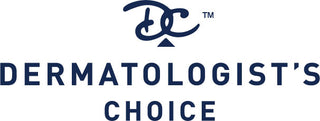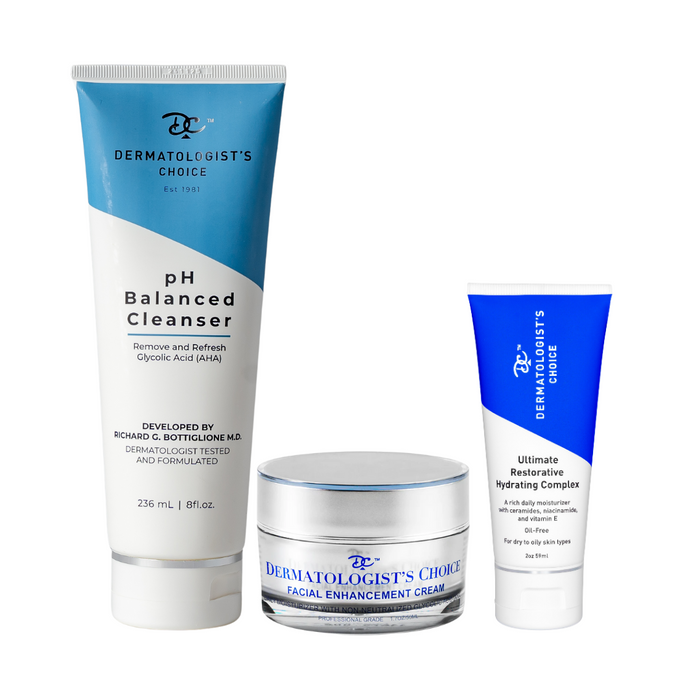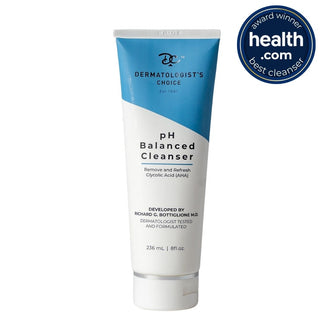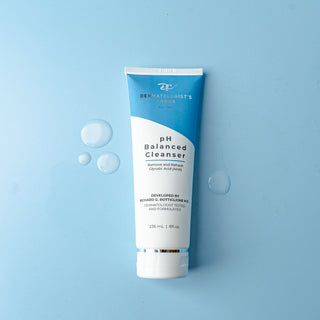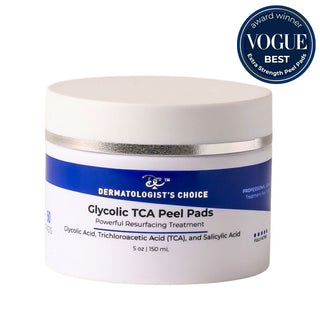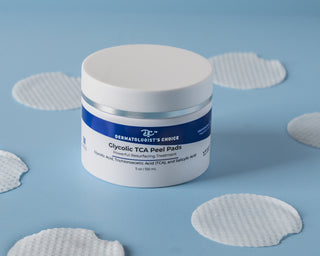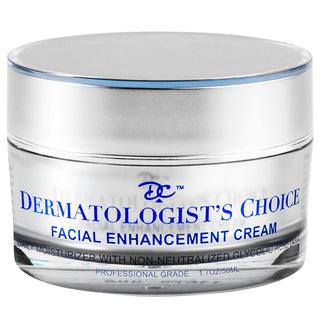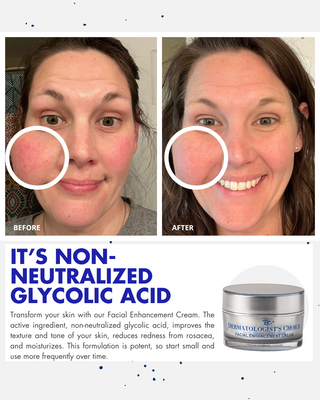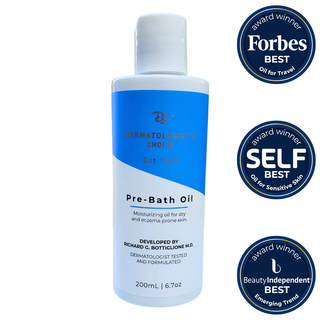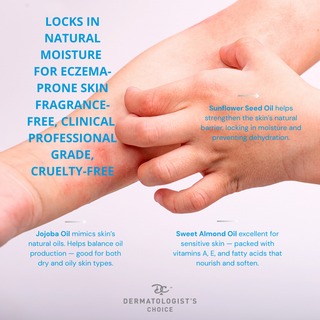Dermatologist Dr. Bottiglione explains the best solution. Watch the short video below.
Picture this: you've just started a game-changing skincare routine with glycolic acid, and you're eagerly awaiting that fresh, radiant glow. Then, seemingly out of nowhere, tiny bumps appear on your skin. Before alarm bells start ringing, let's clear the air. These bumps aren't invaders - they're markers on the path to better skin.

Let's unravel this common side effect and why it's an integral part of your skincare journey, not a setback. Glycolic acid holds a coveted position in the world of skincare, renowned for its powerful exfoliating and renewing properties.
However, it can cause some initial reactions like red bumps or minor breakouts on the skin. While this might seem like a cause for concern, it's actually an essential part of your skin's adjustment and improvement journey with glycolic acid. Glycolic acid, an alpha-hydroxy acid (AHA) sourced from sugarcane, is a true skincare champion. Its secret? It dissolves the bonds between dead skin cells, pushing them aside to unveil the new, bright skin underneath.
Besides, it triggers collagen production, a crucial process that minimizes fine lines and wrinkles. Now, any significant change involves a period of adjustment, right? This holds true for your skin as well. The accelerated shedding of dead skin cells, often leading to red bumps or breakouts, is known as the "purging" process. It might seem a little alarming initially, but it's actually a positive sign that the glycolic acid is doing its job - paving the way for a smoother, brighter complexion.
You may be seeing similar redness and bumps like this real Dermatologist's Choice customer who used the Ultra Anti-Aging Cream. Slight redness and bumps were present but cleared in about 7 days.

Normally, some people get small red papules that last 1-3 days. Others can see bumps for up to 14 days. This may be caused by glycolic products with a greasy/oily base. Also after certain glycolic products like Dermatologist's Choice it can be a normal reaction to the active non-neutralized glycolic. The best way to clear this up the dermatologist recommendation is to use the Dermatologist's Choice Glycolic Peel Cleansing Pads followed by a moisturizing cream. If you're already using Dermatologist's Choice active glycolic acid products a moisturizer will be good enough. Any other products that claim to included glycolic may cause pimples and the glycolic acid in the Glycolic Peel Cleansing Pads is necessary. There's a scientific basis to this, too. A study in the Journal of the American Academy of Dermatology talks about this skin "purge", may last typically between two to six weeks, especially in individuals with acne-prone skin. Rest assured, this process is totally normal and benign. The initial increase in breakouts is just a brief phase before the reveal of your skin's radiant glow.

But why the red bumps or breakouts? It's basically your skin responding to the hyper-accelerated rate of exfoliation. The dead skin cells, mixed with oil and bacteria on your skin's surface, can lead to clogged pores and breakouts. This little gathering is more common in people with acne-prone skin or those with excess dead skin cells. Bear in mind, everyone's skin is unique, and reactions can vary. Some people might only experience mild flaking or dryness, while others may not notice any temporary bumps or breakouts at all. In essence, the presence of bumps or breakouts after using glycolic acid is a positive sign - it indicates your skin is actively participating in the renewal process.
P.S. You might be wondering about glycolic acid strength, or what "active non-neutralized" glycolic acid means. Active non-neutralized glycolic acid, with its low pH, offers more potent exfoliation. If your skin shows red bumps after using such a product, take it as a sign of its effectiveness. Just like adjusting to a new routine takes time, your skin might also need a little while to adapt to the strength of non-neutralized glycolic acid.
But hang in there, with patience and regular use, you'll soon be enjoying clear, glowing, bump-free skin. The initial bumps are not setbacks, but stepping stones to your skincare victory. In the end, it's the radiant glow of your skin that will take center stage!
If you find yourself with these bumps on your skin, Dr. Bottiglione recommends using the Glycolic Peel Cleansing Pads to clear the pores and a moisturizer like the Dermatologist's Choice Hydrating Complex to soothe the skin. Most see the bumps disappear after 1-3 days from using active non-neutralized glycolic acid. If you're using another product it may take longer to clear up.
Once the bumps have disappeared it is now a good time to restart using glycolic acid. Dr. Bottiglione recommends using the mild glycolic acid cream, the Facial Enhancement Cream by Dermatologist's Choice. Trusted for 40 years, this product can improve the skin texture, tone, and brightness. It's ideal for improving aging, acne, and dull-looking skin.
The Age Management: Starter Set has both the Hydrating Complex moisturizer and the mild glycolic Facial Enhancement Cream you need to get on the best skincare routine.
Feel free to contact our skin experts if you have additional questions at help@dermchoice.com.
MEET THE EXPERT

Disclaimer: The skincare articles on Dermatologist’s Choice are intended for educational purposes, providing insights into specific ingredients and skincare topics. Our content is designed to be informative, not to serve as medical advice. Any mention of patient experiences is purely for informational purposes and should not be interpreted as a treatment recommendation. Additionally, any Dermatologist’s Choice products referenced in these articles are formulated for cosmetic use only and are not intended to replace professional medical advice or pharmaceutical treatments. Always consult a physician for personalized skincare recommendations.
